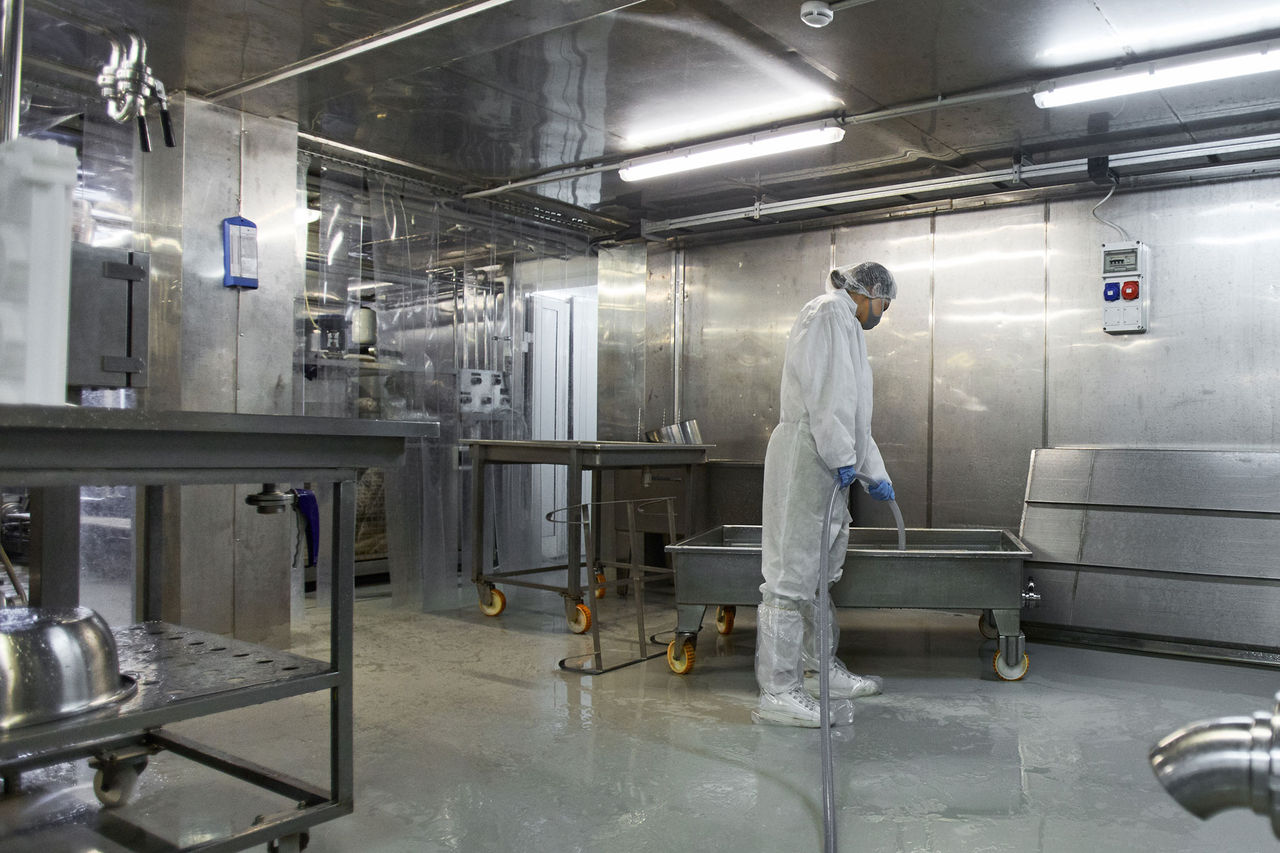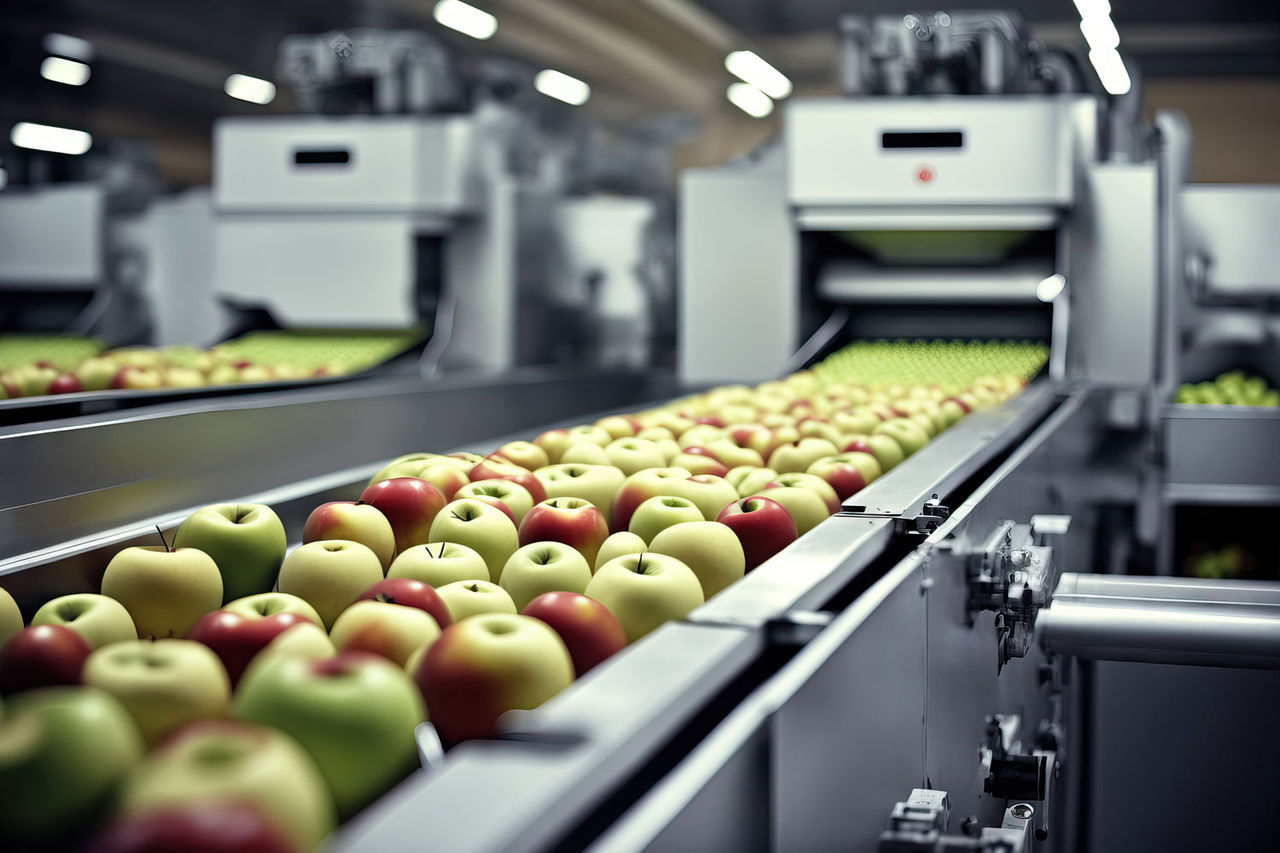In this article
Making a clean start in food production - why hygienic design matters
You are careful to use only food contact approved materials. You always insist on full documentation from your suppliers, to ensure traceability throughout the supply chain. And of course you operate always to the strictest food production hygiene protocols. But if your food production machinery is not designed and engineered to the latest hygienic design principles, it can all be so much wasted effort.

In both food production and the pharmaceutical industry, it’s the little things which cause the biggest problems. Even in a facility which prides itself on hygienic manufacturing, those little things – more correctly known as micro-organisms – can find hiding places in poorly-designed machinery. They can evade washdowns, multiply, and then find their way into food or pharma products – where they can cause contamination, deterioration, and potentially even customer health and safety issues.
Best Practice is to give those micro-organisms the least possible chance of establishing themselves. Which demands hygienic design of plant, equipment, machinery, production lines and individual components, right from the very start.
Dead loss
When items are engineered without proper consideration of hygienic design principles, they will often contain ‘dead spaces’: nooks and crannies which serve no operational purpose but have simply resulted from the shape or construction of the equipment.
These spaces not only provide perfect places for micro-organisms to avoid being washed out. They can also act as reservoirs where residues of the cleaning agents – which have been used to counter the micro-organisms – themselves build-up and lead to another set of problems.
Liquids, chemicals and disinfectants which have not been completely removed after washdown can affect the equipment – or in the worst cases migrate into product batches, leading to tainting or contamination.
That’s why, for truly hygienic production, it’s essential to lose the dead spaces, and design-in hygiene from the very start.

Legislation and education
The Machinery Directive for the food industry describes a wide range of hygiene requirements which need to be considered at the design stage. Also listed in ISO 14159, they cover aspects of hygienic design from the location of electrical components to the capability for effective cleaning of the whole production line.
However compliance with standards and guidelines only ensures you achieve the bare minimum of requirements. Going further can optimise food or pharmaceutical safety, increase efficiency (through quicker and more effective washdowns, for example), and help lower the Total Cost of Ownership of assets.
As a member of the non-profit European Hygienic Engineering & Design Group (EHEDG), ERIKS is one of a consortium of machine builders, food companies, food industry suppliers, research institutes, universities and government agencies which works to provide education on hygienic design, and to offer guidance on understanding and complying with national and international legislation.
Design-in, not out
Prevention is better than cure. In the same way, incorporating hygiene requirements at the design stage of a component, machine or line is far more effective than reverse engineering to achieve the same result.
Doing that can take longer, lead to costly production downtime, and even then may not be as effective at eliminating micro-organism contamination. In addition, the re-engineered equipment may not be as efficient as one designed from the beginning with hygiene in mind.
So hygienic design from day one matters.
It matters because it guarantees product safety. It matters because it helps to ensure long service life. And it matters because by simplifying cleaning and maintenance, it helps to minimise the asset’s Total Cost of Ownership. When you make a clean start, you can really clean up.

What hygienic design looks like
Hygienic design principles are focused on achieving the elimination of micro-organisms and pests in the production process, and the elimination of contamination risks.
These require particular focus at the design stage on:
- Smooth contact areas and streamlined design
- Correct material selection
- Hygienic welding
- Correct after-treatment of materials
Design engineers also need to consider:
- The environmental conditions in which the equipment will be operating (wet or dry)
- The type of production system (closed or open)
- Allowing for easy inspection of systems and components
- Enabling effective cleaning methods
For more information, or to get in touch with a dedicated Application Engineer, please contact your local ERIKS Service Centre, who will be happy to discuss your options.
#ERIKS #LetsMakeIndustryWorkBetter #Food #FoodSafety #HygienicDesign #Pharmaceutical

